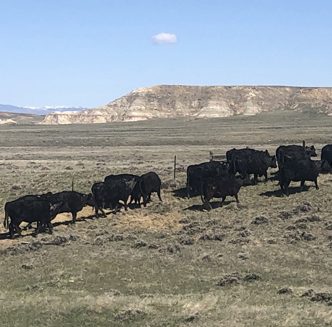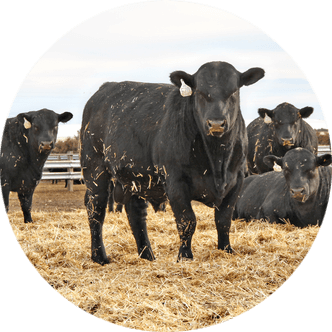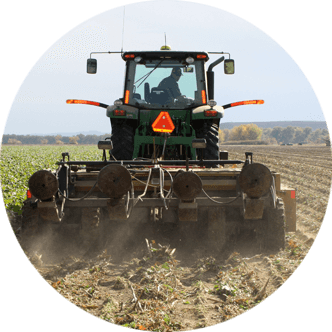CoBank economist offers comments on biofuel opportunities and challenges
In a Sept. 17 edition of the North American Ag Spotlight podcast, hosted by Chrissy Wozniack, CoBank Farm Supply and Biofuels Lead Economist Jacqui Fatka offers her perspective on the shifting landscape of biofuels.
Titled “How Biofuels are Changing Opportunities for U.S. Producers,” the episode features a conversation on the current state of the biofuel industry and explores the potential impacts increased demand for sustainable aviation fuels (SAF) may have on feedstock markets and, consequently, U.S. farmers.
Background on biofuels
Biofuels are renewable energy sources derived from biomass materials called feedstocks, according to the U.S. Energy Information Administration (EIA). Biomass materials include crop waste, forest residue, microalgae and food waste.
The most common types of biofuels used today are ethanol and biodiesel, according to the U.S. Department of Energy.
Ethanol production involves the fermentation of feedstocks like corn, sorghum, barley, sugar cane and sugarbeets, while biodiesel is produced by combining alcohol with vegetable oil, animal fat or recycled cooking grease.
According to EIA, biofuel production and consumption in the U.S. has generally increased each year since the early 1980s. As demand for biofuels continues to rise and research and development progresses, producers have the opportunity to take advantage of the changing landscape, but they must also be equipped to navigate challenges.
“With pressure growing around renewable energy and the rapid development of sustainable aviation fuels, producers and agribusinesses are facing new challenges and opportunities in feedstocks, investments and policy,” Wozniack begins.
She then introduces Fatka, who offers comments informed by “two decades of experience in ag policy, biofuels, trade and farm management.”
Highlights from Fatka’s comments include details on biofuel research and development, as well as how the demand for SAF might influence corn and soy production in the U.S.
She also gives advice on how producers can stay educated and protected in the face of shifting markets.
Sustainable aviation fuels
World Energy defines SAF as jet fuels made from materials like used cooking oils and agricultural waste.
In the podcast, Fatka notes most SAFs in the U.S. are produced through the hydroprocessed esters and fatty acids (HEFA) process, which uses hydrogen to turn agricultural products like soybeans and canola oil – as well as waste oils and animal fats like beef tallow – into fuel.
Fatka further mentions hope for employing an “alcohol-to-jet” production process in greater quantities, which would use feedstocks similar to those found in ethanol production to make SAFs and, therefore, create benefits for farmers.
However, Fatka notes development is still ongoing and the process is expensive.
“There’s plenty of corn in the U.S.,” Fatka explains. “Being able to get feedstocks is not a problem, but the cost of alcohol-to-jet production for sustainable aviation fuel is much more expensive.”
“This is why we haven’t seen a lot of plants be able to scale commercially yet,” Fatka continues. “The important part is being able to make investments to drive costs down and make alcohol-to-jet production more cost competitive.”
Additionally, Fatka says lower global oil prices have led to challenges in sourcing investment in biofuel research and development and notes the U.S. is currently “a drop in the bucket” in terms of worldwide SAF use and domestic production.
“When oil is really expensive, it’s easier to promote biofuels as an economic alternative to high oil prices,” Fatka observes. “Oil prices are really low right now, so it’s hard to spin the need to invest in research and development.”
In terms of the big picture, Fatka says the future of domestic SAF production will depend on economic factors including tax incentives.
“SAF is not something you can turn on production of overnight,” Fatka says. “Unfortunately, we’re still years out. Without some of the policy levers to encourage things from the different tax incentives, we’re just not really going to see this truly take off.”
Furthermore, Fatka acknowledges some states including Minnesota and Illinois are trying to encourage SAF development to use at a local level, even without federal support.
“We’re still really early in this industry, and I think we have a lot to learn,” Fatka continues. “Some things we think we know now are going to change, but this also makes it really exciting. There are new things happening and new partnerships coming together.”
Staying informed
In the face of a shifting landscape, Fatka emphasizes keeping an ongoing dialogue with different players throughout the supply chain is important to remaining educated and prepared.
When asked about the potential for SAF adoption to change demand for traditional feedstocks like corn and soy, Fatka predicts a potential increase in demand for soybean oil, as well as any feedstock able to be run efficiently with a low carbon input score.
Fatka emphasizes there are many nuances to the biofuel market and research is constantly ongoing. She also notes a shift in SAF production could have an impact on the food sector and food prices, and conversations about this tradeoff are ongoing within the industry.
“This is one of those issues that is moving and changing a lot,” Fatka says. “There is a lot of hype and hope when it comes to SAF, but we have to be able to have a good, grounded understanding of what’s needed today.”
Overall, Fatka recommends farmers stay engaged with commodity groups and capture data on personal farming practices to remain educated and economically sustainable.
“If we keep pushing off investment, it’s going to keep pushing off return,” Fatka says. “We can’t capture any value if we’re not researching it now, figuring out what works and what doesn’t and maybe using different policy levers to help advocate for what’s needed.”
Grace Skavdahl is the editor of the Wyoming Livestock Roundup. Send comments on this article to roundup@wylr.net.





